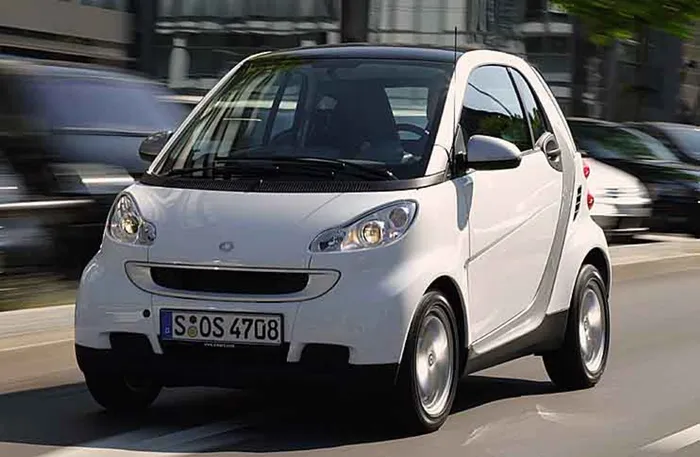It might be Smart, but it ain't a hybrid

Let's clear up some confusion right now. Smart's cleverly named Micro Hybrid Drive ForTwo is in no way a hybrid. It is NOT a hybrid.
Instead, it's a devious ploy to attract buyers far more clued up on environmental issues than automotive ones, nd I'm not just saying that because of the misleading nomenclature stuck to the boot lid.
The Smart ForTwo MHD's mission in life - which we first told you about in November 2008- is environmental friendliness and it's trying its darndest to be green by switching off its 52kW, 999cc, three-cylinder engine whenever the car halts then starts it again when you need to pull away.
I've no problem with that. It's a new technology trend that's sweeping the industry and if it actually saves petrol and nasty emissions, then so be it.
Our calculations, over a tank-to-tank distance, showed the two-seater Smart used an average of 7.4 litres/100km. Hardly worth the effort, especially when a regular five-seater hatch such as a Honda Jazz 1.5 uses less than seven and throws extra power and seats into the deal.
Smart claims an average consumption of 4.3 litres/100km with 103g of carbon emitted per 100km. It doesn't take a rocket scientist to figure that if real-world fuel consumption is almost double that claimed, then C02 emissions are too.
It's not unusual for an automaker to exaggerate its cars' figures - we catch them out all the time - but the MHD has too many driveability compromises to forgive. And that says a lot because before the auto start/stop (sorry, MHD) system came along the Smart's driveability was already quite compromised. It has the same pulling power as a kindergarten tug-o'-war competition and this overwhelming lack of grunt trickles through the worst gearbox to make production since the beginning of the last century.
Changing gears is done with fore-and-aft movement of a stick in the console, without a clutch pedal. A digital readout on the instrument cluster constantly advises upshift points to try to save fuel but it won't automatically shift until the pistons are ready to say howzit to the bonnet.
There's enough time between each mechanical gear change to read a chapter of 'War and Peace' and the whiplash-inducing lurches are by far the most irritating aspect of the car.
NOT TOO SUBTLE
Almost as irritating are the automatic engine stop/starts. Dip below eight km/h with your foot on the brake and the motor will cut. Quite eerie when smack in the middle of one of Johannesburg's chaotic road junctions.
Lift off the brake and the engine will fire up again, but not in an inconspicuous "I didn't even feel it" way. Three-cylinder engines aren't exactly known for their smoothness and this one sparks back into life with the subtleness of an epileptic seizure.
Thank goodness the system can be switched off with a button marked "eco" near the gear shifter; I suspect most MHD units around the world will be left in the 'off' position. However, our test unit suffered a strange phenomenon while idling and stationary. On a level surface it would engage reverse and take off backwards if I wasn't on brake. I blame that horrific gearbox. Sigh.
Other than its diminutive size, which is convenient for nipping into tight parking spaces, the Smart ForTwo MHD doesn't have a lot going for it. It's not nearly as fuel-economical as claimed and there are too many pitfalls to fork out the R149 000 required to own one.
Both thumbs down for this one.